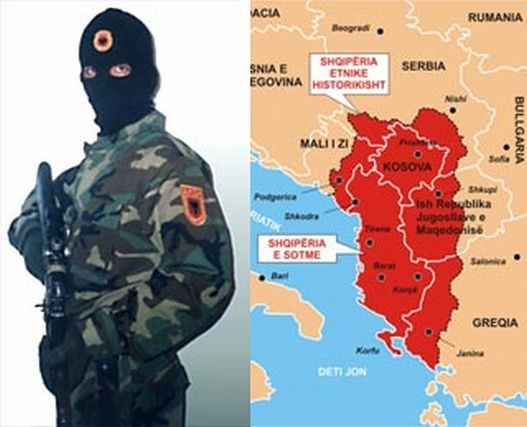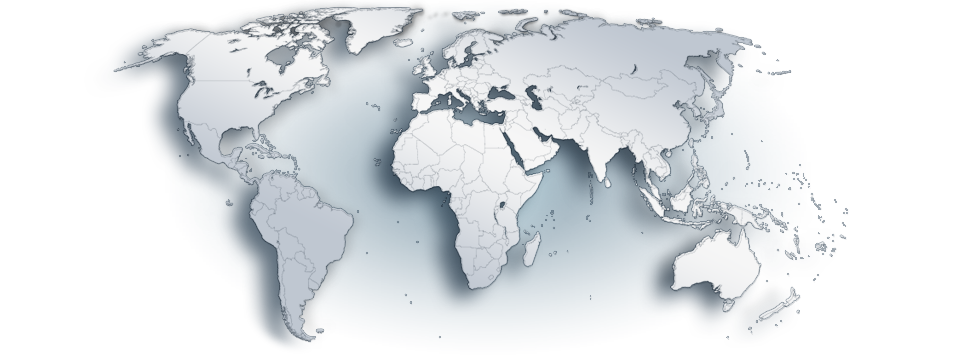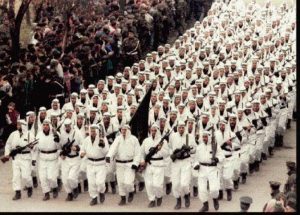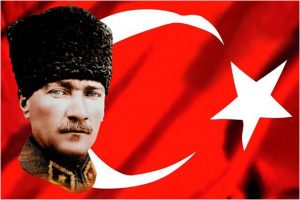
Views: 2517
One of the claims of Albanian historiography is that the Central Balkan tribe – Dardanians, who settled in the southern portion of the territory of the Roman Province of Moesia Superior and northwestern part of the Roman Province of Macedonia, should be considered as one of the Illyrian tribes and an ancestor of the Albanians. With respect to this point, Albanian historians refer to the German linguist Norbert Jokl who wrote, according to the research of historical toponomastics, that the ancient cradle of the Albanians was Dardania, from where they moved westward to their present territories in late Roman times.[1] Consequently, the northwestern territory of the present-day Republic of Macedonia (the FYROM), Kosovo and Metohija and present-day Southern Serbia (settled by the Dardanians in Antiquity as well as the northeastern portion of the present-day Republic of Albania) are considered as Albanian historical lands and thus had to be included into a united Albanian national state in the future. For Albanian proponents of the theory of the Illyrian-Albanian symbiosis, the most valuable information and evidence that the ancient Dardanians were the Illyrians (and thus Albanian ancestors) comes from the archaeological excavations in the Kukës region in Northeastern Albania which belonged to the western portion of the Dardanian state.[2] What is of extreme importance according to them, is that the traditional Illyrian names like Andinus, Annius, Dassius, Epicadus, Genthiana, Rhedon, Surus, Tata, Tridus can be found in the inscriptions in Dardania. The Yugoslav specialist in Illyrology, Henrik Barić from Sarajevo, also championed the idea that “the Balkan homeland of the Albanian people must have been Dardania-Paeonia, provinces which, judging from the known names of persons, were the Illyrian and not Tracian in Antiquity… Therefore, it can be said that Dardania and Paeonia were the provinces in which the early Albanian-Illyrian symbiosis took place in the interior of the Balkan Peninsula”.[3] Barić, in fact, disagreed with the theory of the Romanian linguist Mateescu who, in his detailed analysis of the epigraphic material, dated the Thracian infiltration into the province of Dardania to the 2nd and 3rd centuries A.D.[4]
The Albanian exponents of the theory of the Illyrian-Albanian continuity and ethnic symbiosis repeatedly quote Arthur Evans that the same coins, pottery and other handcraft products from ancient Dyrrhachium and Apollonia (located on the Albanian littoral) are found in Kosovo and Metohija (in the regions of Peć, Đakovica and Prizren).[5] This fact is, however, only evidence of the Hellenization of the Illyrians as the coins were of the Greek origin. Greek was evidently the language of official inscriptions among the educated class of Illyrian society.[6] The Yugoslav historian Fanula Papazoglu discovered a Dacian-Moesian or Phrygian stratum in the formation of the Dardanians. For that reason, the Dardanians cannot be identified with the Illyrians and thus cannot provide support for the development of Illyrian-Albanian ethnic self-awareness.[7] Finally, modern European ethnographic and historical sciences suggest that the homeland of the Albanian nation lies in what is today Central Albania. The German Illyrologist-Albanologist, Georg Stadtmüller, stresses that the original Albanian native region includes the valley of the Shkumba river, both sides of the Mat river, Kruja, and some neighboring areas.[8]
The highlanders from Albania, however, began to migrate from their mountains in mid-14th century towards the more fertile lowlands of Thessaly, Boeotia, Attica, Euboea and Peloponnese, while from the end of the 17th century they migrated towards the north-east occupying the territories of Kosovo and Metohija (“Old Serbia” or Serbia proper) and the territories of present-day Serbia around the cities of Novi Pazar, Vranje and Niš.[9] Certainly, it was not until the 18th century that throngs of Albanian herdsmen came down from their native country’s highlands to the fertile areas of Kosovo and Metohija, which up to that time were populated almost exclusively by the Eastern Orthodox Serbs, and to the regions of today’s Western Macedonia (from Skopje to Bitola) whose population consisted of a majority of Macedonian Slavs and a minority of Serbs.[10] Practically, most of the territory of the former Roman province of Dardania mainly settled by Dardanian tribe was not affected by the Illyrian-Albanian elements before the migrations of the Albanian tribes from the highlands of Albania at the end of the 17th century.
The supporters of the theory of Illyrian-Albanian ethnic continuity and symbiosis, however, assert that at the time of the Slavic incursions into the Balkans there was no large-scale settling of the Slavs in the territory of Kosovo, Metohija and Montenegro, i.e. in the former Roman Provinces of Dardania and Praevalis. According to E. Dobruna, an Albanian archaeologist from Kosovo, who investigated ancient toponyms in this region, “we find the continuous presence of native Albanians as successors of the Illyrians in the same territory where they live today since ancient times”.[11] “From the banks of the Bojana river, as far as Ioanina, a unified and homogeneous people live. From Ioanina to Bay of Ambrazio, lies the territory denied by the Greek religious and other propaganda to the Albanians, who are predominant there – if not in number, than at least in strength and capacity to resist”.[12] Consequently, the Illyrian-Albanian historical rights to these territories are longer and stronger than Slavic-Serbian-Montenegrin-Macedonian and even Greek ones.[13]
A Question of the “Koman Culture”
The majority of Albanian archaeologists have claimed that the Koman Culture that existed in the 7th and 8th centuries, represents an historical-ethnic continuity of the Illyrian-Albanian ethnogenesis. The Koman Culture, according to them, included an extensive territory from Lake Skadar on the north to Lake Ohrid on the southeast. For them, the Illyrian-Albanian ethnic roots of the Koman Culture are more than obvious (although not scientifically proven).
The importance of this culture for the Albanian albanologists is of an extreme value as they are trying to prove that the Koman Culture is the direct continuation of the local Illyrian-Albanian culture of late Antiquity and the early Middle Ages. In other words, according to them, the Koman Culture shows that at the time of Slavic migration to the Balkans the native Illyrian-Albanian territories were characterized by stability and vitality. They further claim that the material evidences of the Koman Culture, which lasted during the period of transition from the late Antiquity to the early Middle Ages, share a commonality with all Illyrian-Albanian regions including those of Kosovo and Metohija, Eastern Montenegro and Western Macedonia.
Albanian archaeologists disagree with the views of their Yugoslav colleagues on the Slavic or Roman-Byzantine character of the Koman Culture.[14] Thus, for Albanian scientists, the data archaeologists have discovered in many localities from the 7th and 8th centuries, clearly fill the gap of the Illyrian-Albanian cultural-ethnic continuity, the gap which could not be filled completely from written historical (primarily Byzantine) sources. Thus, for the Albanian albanology, the Koman Culture is the crucial link in the chain of the unbroken Illyrian-Albanian ethnogenesis from the early Antique to the present. For them, it must serve as the pivotal proof of allegedly Albanian origins on the Balkan Peninsula.
However, it is a matter of fact, that large Slavic settlements and toponyms existed in the area that came to be known as present-day Albania. After the first Albanian state was created in 1912, and especially during the rule of the Albanian communist dictator, Enver Hoxha (1945–1985), however, a great part of the non-Albanian (especially Slavic) population and toponyms were Albanized.[15] Simultaneously, “Albanian national soil” was (and continues to be) gradually cleansed of both the Slavs and the Greeks[16] and their national-cultural traces. In this respect, the province of Kosovo and Metohija experienced the most serious ethnic and cultural cleansing in the post-1945 Europe (together with the territory of former Republic of Serbian Krayina in present-day Croatia which was ethnically cleansed by the Croat military and police forces in August 1995).[17] This southern Serbia’s province, known (for the Serbs) as “Old/Ancient Serbia”, or “Serbia proper”, became almost totally ethnically and culturally cleansed by the local ethnic Albanians after the province was occupied by NATO troops in June 1999. Today, there is less than 3% non-Albanian population in the province (compared to 13% in 1998), the Slavic-Serb toponyms have been renamed to Albanian ones, the Serb cultural property, as the physical proof of Serbian national existence in the province from a historical perspective, has been largely destroyed (see figure 3) or officially called as the “Byzantine” one and the rest of the non-Albanian population (together with the local Serbs) has been expelled from the province which proclaimed its state independence in February 2008.[18]
It is in this way that Kosovo and Metohija have become an exclusively Albanian populated and culturally inherited land – a part of a united national state of ethnic Illyro-Albanians in the form of the Greater Albania. Nevertheless, from the perspective of relevant historical sources (the first Ottoman census in Kosovo and Metohija done in 1455), there was only a 2% Albanian population in the province in the mid-15th century.[19] One of the most famous South Slavic philologists in the 20th century, Pavle Ivić came to the conclusion after an in depth investigation of the case-study of Kosovo and Metohija that “the factual material clearly shows that there was no linguistic continuity between the ancient population of the present province of Kosovo’s population, and those who now inhabit the area”.[20] This is one of the most serious scientific refutations of the Albanian hypothesis of the Illyrian-Albanian ethnogenesis. In addition, even today, an overwhelming majority (if not all) of the toponyms in Kosovo and Metohija are of Slavic (Serb) origin.[21] The present-day Albanian practice of Albanizing them is quite understandable from the perspective of the political aims of the proponents of the hypothesis of the Illyrian-Albanian ethnogenesis.
Endnotes:
[1] Jokl N., Eberts Reallexicon der Vorgeschichte, I, 1924, p. 91.
[2] Anamali S., “The Illyrians and the Albanians”, Prifti K., Nasi L., Omari L., Xhufi P., Pulaha S., Pollo S., Shtylla Z. (eds.), The Truth on Kosova, Tirana, 1993, p. 7; Jubani B., “Features of Illyrian Culture in the Territory of Dardania”, Illyria, 2, 1985, pp. 211−220; Islami S., The Illyrian State – Its Place and Role in the Mediterranean World, I, Tirana, 1974, pp. 85–105.
[3] Taken from [Hymje ne historine e gjuhes shqipe, Prishtinë, 1955, pp. 49–50].
[4] Mateescu N., “Granita de apur a Tracilor”, Annuarul Institutului de Istoria nationale, III, Cluj, 1923, pp. 377–492.
[5] Evans A., “Antiquarian Researches in Illyricum”, Archeologia, XLIX, Westminster, 1883, p. 62.
[6] Papazoglu F., “Les royaumes d’Illyrie et de Dardanie, Origines et development, structures, hellenisation et romanization”, Iliri i Albanci, Beograd, 1988, p. 194; Ceka N., “Survay of the Development of Urban Life Among Southern Illyrians”, Illyria, 2, 1985, pp. 119–136. Compare with [Toçi V., “New Data About the Illyrian Onomastics in Durrhachium”, Illyria, 1, 1986, pp. 123–135].
[7] Regarding the problem of the Illyrian origin of the very important Central Balkan tribe Dardanians, see in [Garašanin M., “Considerations finales”, Iliri i Albanci, Beograd, 1988, pp. 370–372; Garašanin M., “Razmatranja o makedonskom halštatu-Materijalna kultura, hronologija, etnički problem”, Starinar, V−VI, 1954–1955, pp. 37–40; Garašanin M., “Istočna granica Ilira prema arheološkim spomenicima”, Simpozijum o teritorijalnom i hronološkom razgraničenju Ilira u praistorijsko doba, Sarajevo, 1964, pp. 138–141; Mack R., Grenzmarken und Nachbarn Makedonien in Norden und Western, Gottingen, 1951, pp. 170–173; Vulpe R., Gli Illiri dell’Italia Imperiale Romana, III, 1925, p. 163; Cerskov E., Rimljani na Kosovu i Metohiji, Beograd, 1969, p. 106; Mirdita Z., “Dardanian Studies”, Rilindja, Prishtina, 1979, p. 49; Papazoglu F., Srednjobalkanska plemena u predrimsko doba, Sarajevo, 1969, p. 402; Papazoglu F., “Dardanska onomastika”, Zbornik Filozofskog fakulteta, 8–1, Beograd, 1964; Papazoglu F., “Les royaumes d’Illyrie et de Dardanie, Origines et development, structures, hellenisation et romanization”, Iliri i Albanci, Beograd, 1988, p. 174; Jubani B., “Features of Illyrian Culture in the Territory of Dardania”, Illyria, 2, 1985, pp. 211−222; Вулић Н., “Дарданци, Илири и Далмати“, Глас Српске Академије Наука, CLV, Београд, 1933]. While the Yugoslav historian Novak claimed that the Dardanians were not of the Illyrian origin his compatriot Budimir claimed that they were one of the Illyrian tribes [Новак Г., “La nazionalità dei Dardani”, Архив за арбанашку старину, IV, Београд, pp. 72–89; Будимир М., “O etničkom odnosu Dardanaca prema Ilirima”, Jugoslovenski istorijski časopis, III, Beograd, 1937, pp. 1–29; Будимир М., Грци и Пеласти, Београд, 1950].
[8] Stadtmüller G., “Forschungen zur albanischen fruhgeschichte, zweite erweiterte auflage”, Albanische Forschungen, 2, Wiesbaden, 1966, pp. 167, 173.
[9] Оболенски Д., Византијски Комонвелт, Београд, 1996, p. 12, p. 245; Острогорски Г., Историја Византије, Београд, 1959, p. 464, p. 505; Lemerle P., “Invasions et migrations dans les Balkans depuis la fin de l’époque Romaine jusqu’au VIIIe siècle”, Revue historique, 78, 1954, p. 294; Lemerle P., Les plus anciens recueils des miracles de Saint Demétrius, II, Paris, 1981, p. 67; Јиречек К., Историја Срба. Политичка историја до 1537. gод., Књига I, Београд, 1978 (original written in German and published in Wien, 1911), pp. 85–86, 216; Јиречек К., Радонић Ј., Историја Срба. Културна историја, Књига II, Bеоград, 1978 (unfinished original by K. Jirechek in German, printed in Wien, 1911. Completed by J. Radonjić), pp. 33, 34, 101, 105, 145, 153. On the Albanian residents in South-East Serbia in the districts of Niš, Leskovac, Prokupjle and Kuršumlija in 1878, see [Protest of 6200 Albanian emigrants… (Priština, June 26, 1878), Politisches Archiv des Auswartigen Amtes, Bonn, Fund of the Acts of the Congress of Brlin, 2, 1878, doc. № 110 (telegram)].
[10] The Roman Catholic bishop in Skopje, Matija Masarek wrote in 1764 a report to Vatican in which he noted brand-new colonies of the Albanians who had just abandoned high Albania and settled themselves in the lowland of Metohija around the city of Đakovica [Radonić J., Rimska kurija i južnoslovenske zemlje od XVI do XIX veka, Beograd, 1950, p. 654]. On religious and ethnic situation in Albania, Kosovo and Metohija in the mid-17th century, see [Jačov M., Le Missioni cattoliche nel Balcani durante la guerra di Candia (1645–1669), vol. I–II, Città del Vaticana, 1992], in the mid-19th century in [Müller J., Albanien, Rumelien und die österreichisch-montenegrinische Granze, Prag, 1844], and in the years from 1804 to 1912 in [Стојанчевић В., Срби и Албанци 1804–1912, Нови Сад, 1994]. According to the Serbian historian Jevrem Damnjanović, the members of the following Albanian tribes (fisses) settled Kosovo and Metohija during the Ottoman rule: Kriezi, Tsaci, Shop, Dukadjini, Berisha, Bitiqi, Krasniqi, Gashi, Shkrele, Kastrati, Gruda, Shala, Hoti, and Kelmendi [Дамњановић Ј., “Мучеништво Косова”, Интервју, специјално издање, октобар, Београд, 1988, p. 5].
[11] Dobruna E., “On some ancient toponyms in Kosova”, Onomastika e Kosoves”, Prishtina, 1979, p. 46.
[12] Stulli B., Albansko pitanje, JAZU, Zagreb, Vol. 318, 1959, p. 325.
[13] Çabej E., “The problem of the autochthony of Albanians in the light of place-names”, Buletini i Universitetit Shteteror te Tiranes, № 2, 1958, pp. 54–62.
[14] Anamali S., “La nécropole de Kruje et la civilisation du Haut Moyen Age en Albanie du Nord”, Studia Albanica, 1, 1964, pp. 149–164; Anamali S., “The Question of the Albanian Early Mediaeval Culture in the Light of New Archaeological Discoveries”, Studime Historike, 2, 1967, pp. 22–40; Spahiu H., “The Arber graveyard at the Dalmaca Castle”, Illyria, 9–10, 1979–1980, pp. 23–45; Komata D., “The Arber grave-yard of Shurdhah”, Illyria, 9–10, 1979–1980, pp. 105–121; Prendi F., “A grave-yard of the Arber culture in Lezha”, Illyria, 9–10, 1979–1980, pp. 123–170; Doda N., “The Arber Graves of Prosek in Mirdita Region”, Illyria, 1, 1989, p. 113; Spahiu H., Komata D., “Shurdhah-Sarda, a Mediaeval Fortified Town”, Illyria, 3, 1975, p. 249; Popović V., Byzantins, Slaves et autochthones dans les provinces de Prévalitane et Nouvelle Epire, Ecole française de Rome, 1984, pp. 181−243; Popović V., “Albanija u kasnoj antici”, Ilirci i Albanci, Beograd, 1988, pp. 202–283.
[15] Hrabak B., “Širenje arbanaških stočara po ravnicama i slovenski ratari srednjovekovne Albanije”, Stanovništvo slovenskog porijekla u Albaniji, Titograd, 1991, p. 115. Regarding the Slavic toponyms in Albania, see [Popović V., “Albanija u kasnoj Antici”, Ilirci i Albanci, Beograd, 1988; Selischev A. M., Славианское население в Албании, София, 1931]. A Serb historian Sima Ćirković claimed that the Albanian toponyms in the present-day Albania can be found only in her central regions between the Shkumba and Mat rivers while the southern regions of Albania is covered by the Slavic toponyms. About this issue see more in the works on Albanian toponyms by the Austrian Byzantologist Johannes Koder.
[16] Gersin K., Altserbien und die albanische Frage, Wien, 1912, p. 29; Vlora B. E., Lebenserinnerungen, Band I (1885 bis 1912), München, 1968, p. 275; Vlora B. E., Die Wahrheit über das Vorgehen der Jungtürken in Albanien, Wien, 1911, p. 43. According to the U.S. Office of Strategic Services, from April 1941 until August 1942, the Albanians killed around 10.000 Serbs and Montenegrins in the areas of Kosovo and Metohija which were incorporated into Italian Greater Albania [Krizman S., Maps of Yugoslavia at War. Massacre of the Innocent Serbian Population, Committed in Yugoslavia by the Axis and its Satellites from April 1941 to August 1942, Washington, 1943].
[17] Operation “Storm” (“Oluja”).
[18] March Pogrom in Kosovo and Metohija, March 17−19, 2004, with a survey of destroyed and endangered Christian cultural heritage, Belgrade: Ministry of Culture of the Republic of Serbia−Museum in Priština (displaced), 2004; http://crucified-kosovo.webs.com; http://www.kosovo.net; http://www.kosovo.lt
[19] Šabanović H. (ed.), Hadžibegić H., Handžić A., Kovačević E. (prepared by), Oblast Brankovića. Opširni katastarski popis iz 1455. godine (original title: Defter-I, Mufassal-I, Vilayet-I, VLK, sene 859), Monumenta Turcica. Historiam Slavorum Meridionalium Illustrantia, Tomus tertius, serija III, Defteri, knjiga 2, sv. 1, Sarajevo: Orijentalni institut u Sarajevu, 1972.
[20] Ивић П., О језику некадашњем и садашњем, Београд: БИГЗ−Јединство, 1990, p. 141.
[21] In the charter (muniment) to the monastery of SS Arhangels in Metohija by the Serbian Emperor Stefan Dushan from the mid-14th century is written that at that time the Albanians lived on the Mt. Prokletije (on the present-day Albania’s border with Montenegro and Metohija) and that Metohija itself was populated by the Serbs [Светоарханђелска повеља цара Стефана Душана, Збирка рукописа Народне библиотеке Србије: http://scc.digital.bkp.nb.rs/document/RS-759].
 Prof. Dr. Vladislav B. Sotirović
Prof. Dr. Vladislav B. Sotirović
www.global-politics.eu/sotirovic
sotirovic1967@gmail.com
© Vladislav B. Sotirović 2017
Personal disclaimer: The author writes for this publication in a private capacity which is unrepresentative of anyone or any organization except for his own personal views. Nothing written by the author should ever be conflated with the editorial views or official positions of any other media outlet or institution.
Origins of images: Facebook, Twitter (X), Wikimedia, Wikipedia, Flickr, Google, Imageinjection, Public Domain & Pinterest.
Read our Disclaimer/Legal Statement!
Donate to Support Us
We would like to ask you to consider a small donation to help our team keep working. We accept no advertising and rely only on you, our readers, to keep us digging the truth on history, global politics, and international relations.
FOLLOW US ON OUR SOCIAL PLATFORMS









